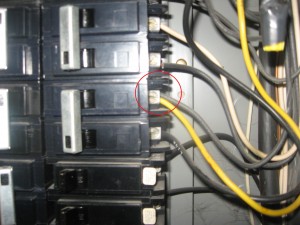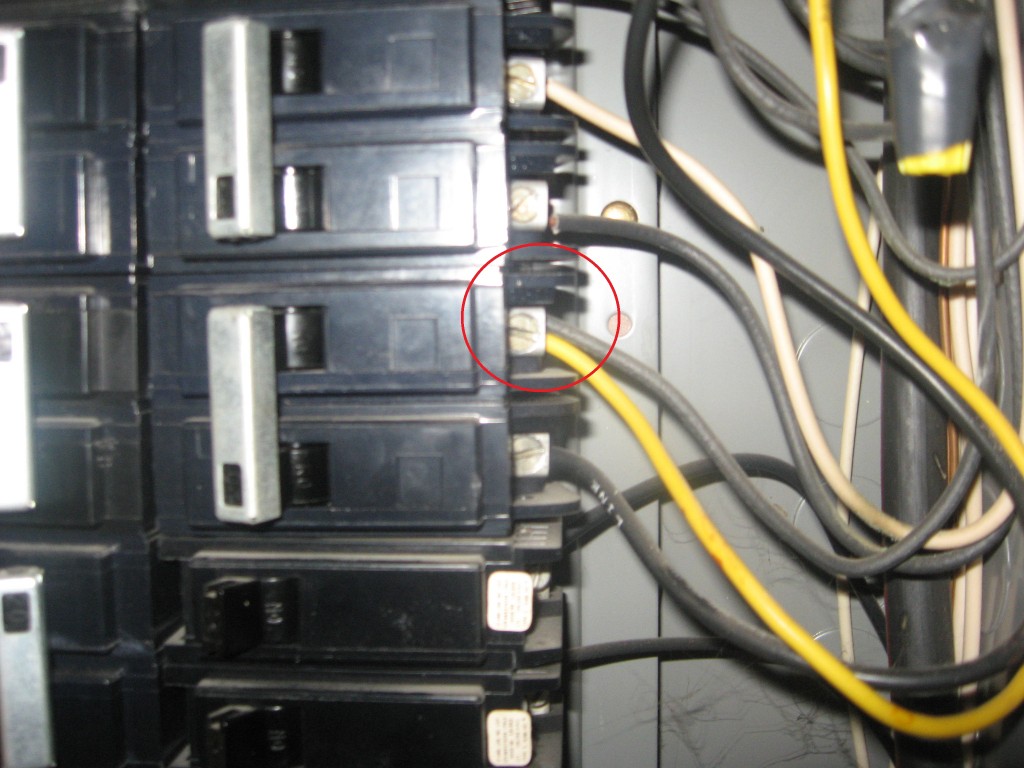Double taps. You’ve probably heard of them before, maybe from a Real Estate Agent, an electrician or another Home Inspector. But do you know what they are? A good Home Inspector should not only let you know when a condition such as double taps exist, but the Inspector should also tell you why it’s a problem and what you should do about it.
What is a double tap?
A double tap is quite simply two electrical wires attached to the same breaker in the electrical service panel. This is a pretty common condition in homes as over the years additions and electrical changes are made. Often times this leads to someone taking a short cut and simply attaching two wires to the same breaker. Most breakers are what’s known as “single pole,” meaning they are only capable of serving one wire. Attaching a second wire exceeds that limit, which can cause overheating and an electrical fire.

In addition, creating a double tap can become confusing and inconvenient when it’s necessary to cut the power to a given area of the home. Shutting off a breaker with a double tap means that power is cut off to both wires, which may be in different sections of the home. This can increase the chance for electric shock when completing home repairs by causing repair personnel to touch electric wires that they believed were not energized.
How to fix double taps
Thankfully, double taps are usually a pretty easy fix. There are several ways to correct the problem, all of which I recommend be completed by a qualified and licensed electrician. They are;
- The “pig tail.” A pig tail in electrical terms is simply joining two wires together, usually with a wire nut. The double tap is eliminated by removing and joining the two wires from the double tap, then attaching the wire back to the breaker. Simple and easy.
- Installing another circuit breaker. Another easy fix; simply installing another properly sized circuit breaker, then removing one of the wires from the original breaker and attaching it to the new breaker. The double tap is fixed, just like that.
- Sometimes there is no room for another breaker in the panel. A final option is the “tandem breaker.” Tandem breakers replace an existing breaker, however the tandem breaker has two poles and two breakers, so it can accept both wires. Most service panels have a limit on how many tandem breakers can exist in a single panel, so your electrician will need to make sure that a tandem breaker is acceptable before installing one.
Double taps are a common find in electric service panels and they show up often on Home Inspection Reports. Now when you read or hear the term “double taps” you’ll have the knowledge necessary to understand what they are, and how to have them fixed in your home.

